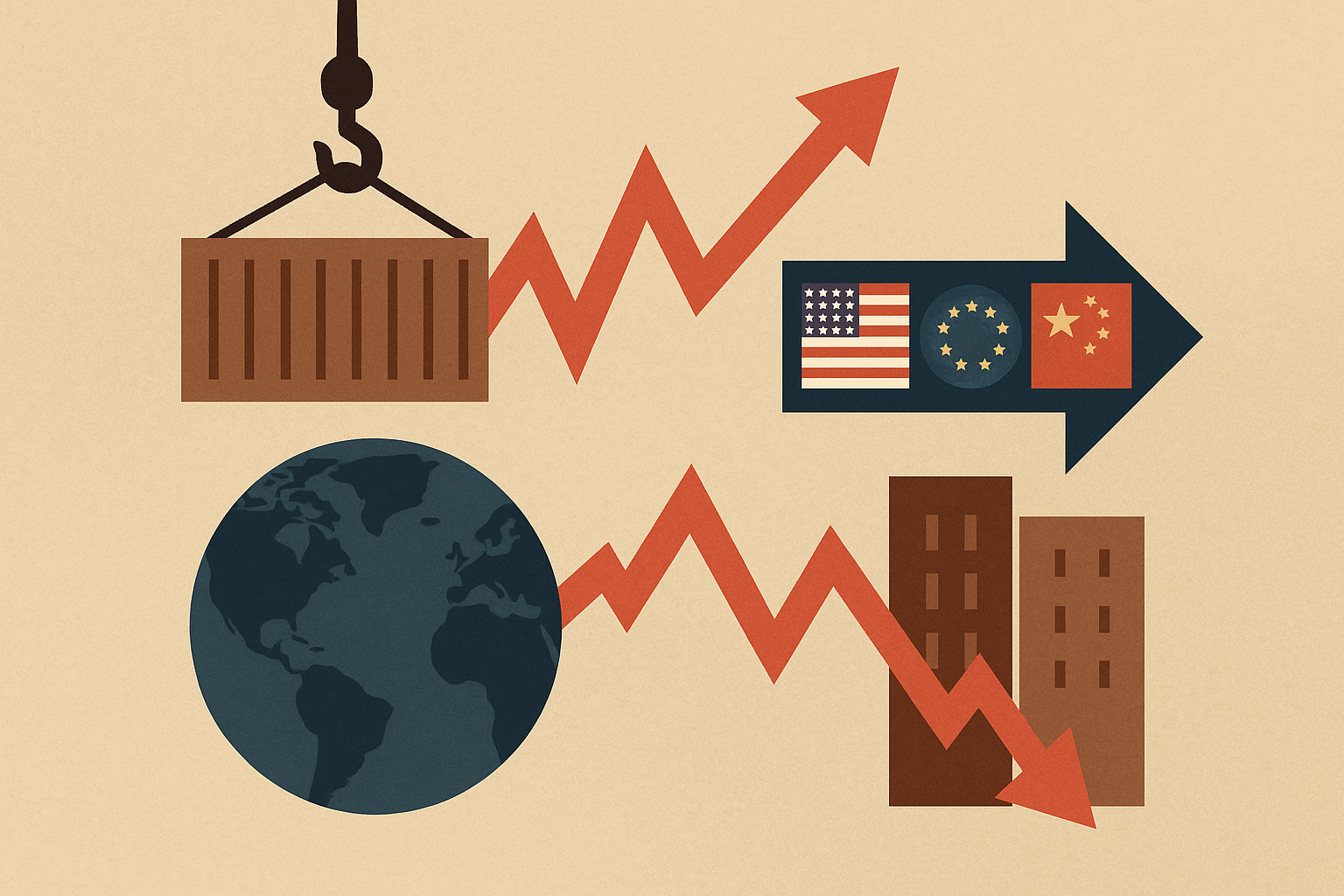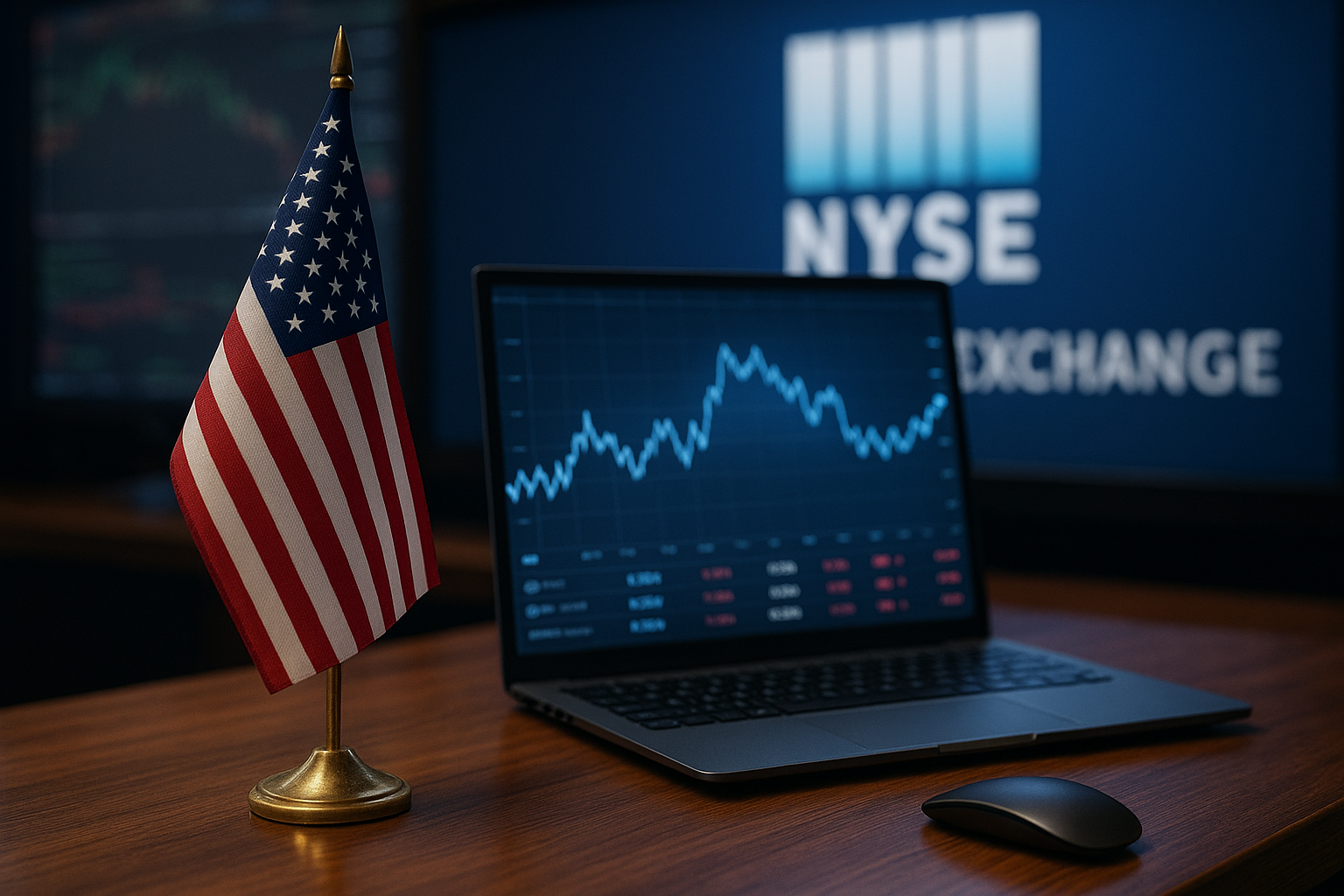Investors woke up Monday to a sharp shift in global trade dynamics as former President Donald Trump, leading in the 2025 Republican race, announced sweeping tariffs on 14 of America’s top trading partners. Framed as a “corrective measure” to protect domestic industries, the surprise move rattled financial markets from Wall Street to Tokyo — and has left investors recalibrating their outlook on global supply chains, corporate margins, and inflation trajectories.
The S&P 500 fell 0.8%, while the Dow Jones Industrial Average dropped 1.1%, according to Investors.com and Business Insider, signaling that markets are bracing for a resurgence in protectionist policy.
Tariffs Take Center Stage Again
According to reports from AP News, The Guardian, and GoodReturns, the proposed tariffs — ranging from 10% to 25% — will affect a wide range of imports including industrial machinery, automotive components, semiconductors, and select agricultural products. Countries directly impacted include China, Germany, Mexico, Canada, South Korea, and Japan.
Trump’s statement emphasized that these tariffs are “designed to level the playing field and protect American innovation,” though market observers see the move as a politically charged response to growing economic nationalism in the 2025 campaign cycle.
In contrast to the U.S. market decline, Asian indices remained largely flat or modestly positive, with the Nikkei 225 rising 0.4% and the Shanghai Composite holding steady — signaling regional confidence in domestic buffers or a wait-and-see approach to U.S. political developments.
Why This Matters for Investors
The return of aggressive tariff policy reintroduces uncertainty into global markets — an environment investors had hoped was stabilizing after a period of supply chain recovery and easing inflation. Analysts from Goldman Sachs and Citi Research now warn that renewed trade tensions could:
- Inflate input costs for manufacturers and retailers with global exposure.
- Pressure earnings for multinational corporations, particularly in technology, automotive, and industrials.
- Shift capital flows into domestic-facing sectors less reliant on global supply chains.
Technology-heavy firms such as Apple, Nvidia, and Tesla — all with significant global manufacturing footprints — were among the worst hit in Monday’s trading session. Meanwhile, sectors such as utilities and regional banks remained relatively resilient.
“Markets are reacting not just to the economic impact, but the signaling,” said Tara Montague, Chief Macro Strategist at Barclays Capital. “This announcement introduces the prospect of retaliatory tariffs, regulatory friction, and uncertainty around trade diplomacy — all of which complicate corporate forward guidance and investment flows.”
Key Indicators to Watch
- Bond Yields: The U.S. 10-year Treasury yield fell 5 basis points as investors sought safer assets, suggesting growing risk aversion.
- Commodities: Industrial metals like copper and aluminum dropped slightly, while oil held steady amid broader volatility.
- Volatility Index (VIX): Spiked by 9%, indicating heightened investor anxiety.
Global Reactions and Retaliatory Risks
Several nations, including China and the EU bloc, issued preliminary responses hinting at “reciprocal measures” should the U.S. follow through. According to The Guardian, EU officials are evaluating counter-tariffs on U.S. agricultural exports and tech equipment.
Historical precedent suggests these moves can quickly escalate. The 2018-2019 trade war cost U.S. businesses over $46 billion in additional tariffs and disrupted billions in global commerce, according to the U.S. Chamber of Commerce.
Markets will be closely monitoring whether the current announcements translate into formal trade policy — or remain campaign rhetoric. However, the fact that equity futures dipped following Trump’s statement suggests investors are already pricing in a more adversarial global trade environment.
Key Investment Insight
Investors should brace for elevated volatility in globally integrated sectors, particularly in:
- Tech & Semiconductors: High reliance on Asian manufacturing hubs
- Automotive & Industrials: Complex, tariff-sensitive supply chains
- Consumer Discretionary: Susceptible to price shocks and input inflation
Conversely, investors may consider rotating into domestic growth sectors such as utilities, healthcare, and select fintech, which are less exposed to global trade dynamics.
Additionally, hedging strategies using volatility derivatives or gold could provide downside protection if trade tensions escalate further in the weeks ahead.
Stay informed on how geopolitical currents are reshaping the markets. Subscribe to MoneyNews.Today for in-depth market analysis, investor strategies, and real-time coverage of the stories that move global capital.





